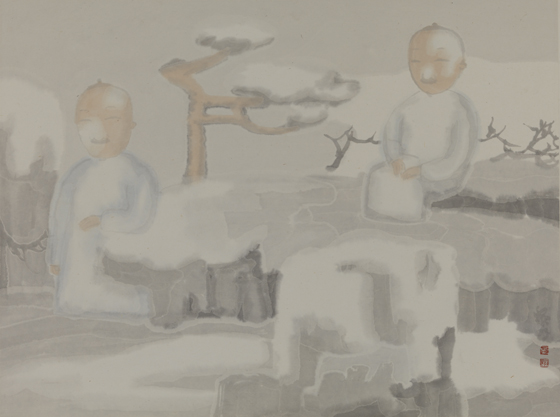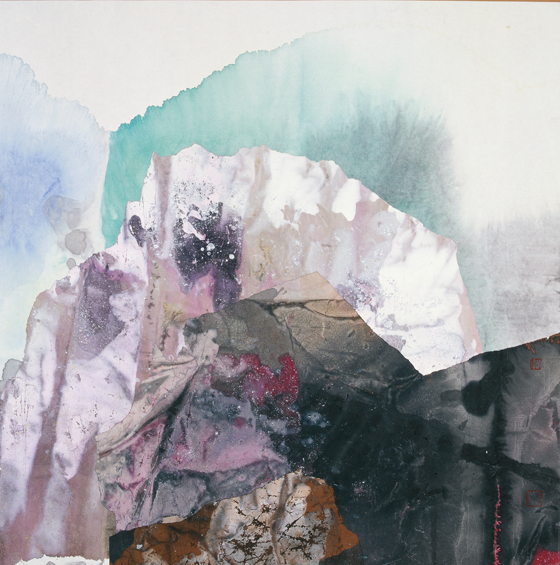The Art from the National Art Museum of China opens in Mexico
Source:: Time:2015年07月23日
The Art from the National Art Museum of China is an important item of inter-governmental cultural exchanges between China and Mexico. The exhibition is co-organized by the National Art Museum of China, Mexican Foreign Ministry and Veracruz State Cultural Affairs Bureau. From October to December 2014, Diego Rivera, Pride of Mexico was held in the National Art Museum of China. It exhibited 34 pieces of works of Diego Rivera, one of the most important artists of Mexico, to unfold the full range of his artistic creation development and styles. The exhibition was loved by Chinese audiences. The National Art Museum of China made an elaborate plan for the large-scale Chinese Contemporary Art Exhibition and Folk Art Exhibition, as a return visit, in a bid to allow Mexican people to understand social changes and progress in China in the era of reform and opening up, appreciate the great vitality of Chinese art in the contemporary age, and feel about the vigor and expressive force of Chinese folk art. The exhibition started at 19:00 July 8, 2015 simultaneously in the Diego Rivera Art Museum, Harappa Contemporary Art Gallery and Harappa Cultural Center in Harappa city, Mexico. The exhibition will last from July 8 to September 27.
Preface
China and Mexico have long histories and cultural traditions. Exchanges between the two countries are of long standing and well established. Cultural interaction has enhanced friendship and kept each other’s culture more dynamic. In the age of globalization, art exchanges between the two countries will be more conducive to exploring the relationship between the global and local cultures, and the contemporary characteristics of artistic creation.
The Art from the National Art Museum of China series project comprises three exhibitions, which are Contemporary Chinese Ink Painting and Sculpture Art Exhibition, Contemporary Chinese Wood Block and Sculpture Art Exhibition. They present new forms and ideas in the artistic creation of contemporary Chinese ink painting, sculpture and wood block. They are established in exploring the “contemporary” conversion of the freehand brushwork spirit of Chinese traditional aesthetic ideology. Chinese artists of the day are no longer confined to the traditional aesthetic ideology. They are exploring new forms and expression of ideas in the globalization context. They are laying increasingly higher emphasis on starting with the historical formation of Chinese art, studying the features and sources of freehand brushwork. Freehand brushwork is the soul of Chinese culture, vast and mighty in poetic style. They are manifested in the process of creating ideas and insights, to narrate and carry forward age-old and yet fresh life experiences.
Ink painting is an artistic language with richest Chinese cultural characteristics. The ink paintings shown in this exhibition represent contemporary Chinese ink painting creations. They reflect diversified angles and strong individual consciousness of artists to understand real life, and show diverse features of the time. Chinese sculpture artists have also realized the cultural heritage between the modern and tradition. They have penetrated into the Chinese traditional sculpture in itself, comprehended traditional modeling rules and aesthetic spirit, and made new explorations for modern transition of the traditional sculpture. Chinese modern freehand sculpture has precisely placed the freehand spirit of traditional sculpture in the same cultural space with the superb body-and-spirit of western realism, and the creation of abstractionism and expressionism, looked for the soul expression, “all with one voice”, in the modern discourse, so as to create an exquisite balance in similarity in spirit and form, equipped with national art spirit and human feelings.
The contemporariness of wood block refers not only to the modernity of the form language, but also transcending the limitation of language for direct reflection on the contemporary spirit. The creation of contemporary wood block has taken on the trend of returning to tradition and the things-in-themselves. It has hence found out the corresponding image and abstraction in the achievements of visual art revolution in the 20th century – expand the field of vision with poetic freehand language of wood block, and present the vivid artistic conception with rich, diversified techniques and patterns, so as to seek the contemporary image of “minimalism” and “surrealism”.
The third part of the exhibition is “Exhibition of Chinese Mask Art”. Different from the first two shows that pay close attention to the current situation of Chinese contemporary art creation, this exhibition displays the vigor and vitality of Chinese traditional folk art. If we say that the first two parts are self-awareness of the elite culture, this part is a sideway description of the belief and aesthetic idea in Chinese folk life. Mexico also boasts time-honored ancient civilization, the tradition, which is one of the centers of the Indian culture in North America. The Mayan Civilization, Toltec Culture and Aztec Culture are all left many mask art works of various styles and functions. Chinese masks have as well stemmed from the totem worship, primitive dance accompanied by music, and primitive witchcraft of the remote antiquity, mainly for expelling the evil spirit and entertaining the deity, with a pluralist artistic style. The masks and facial makeup works on show come from various regions of China, representing different cultural types. We may experience with them the compatibility of Chinese and Mexican folk cultures. They have, in a way, presented the aesthetic significance of their respective cultural heritages and rich anthropological information.
We believe that with these exhibitions, Mexican people will learn about the rich “Chinese spirit”, “Chinese images” and “Chinese styles” in the works, feel the great efforts of the artists to explore the modern values stored in Chinese cultural thoughts, and realize that the cultural genes of the Chinese nation have developed into nectar of the spirit and cells of life in the bodies of the artists. Chinese contemporary art and folk culture have constituted a historic space of dual dimensions. It is expected that Mexican people could see a richer Chinese cultural ecology in these works. This is an open era. We look forward to contributing more to the progress of human culture.
Thank you, all the Chinese and Mexican friends, for paying efforts for the exhibition.




